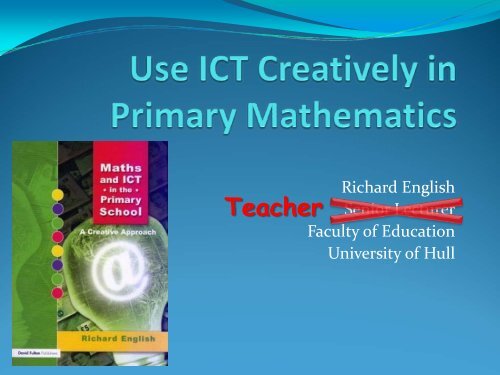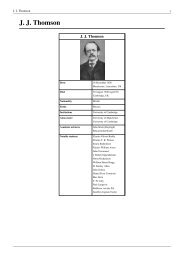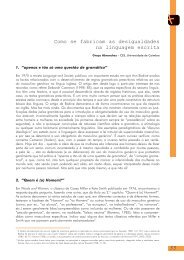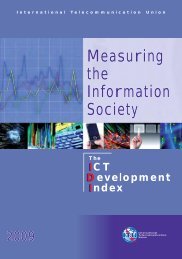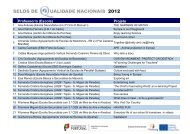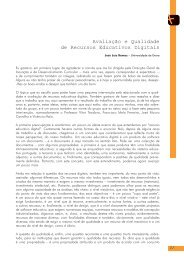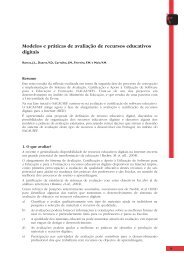The Creative Use of ICT in Primary Mathematics - ERTE
The Creative Use of ICT in Primary Mathematics - ERTE
The Creative Use of ICT in Primary Mathematics - ERTE
Create successful ePaper yourself
Turn your PDF publications into a flip-book with our unique Google optimized e-Paper software.
Teacher<br />
Richard English<br />
Senior Lecturer<br />
Faculty <strong>of</strong> Education<br />
University <strong>of</strong> Hull
Observations over the last 30 years<br />
<strong>The</strong>re can be no doubt that the <strong>in</strong>creas<strong>in</strong>g availability<br />
<strong>of</strong> microcomputers <strong>in</strong> schools <strong>of</strong>fers considerable<br />
opportunity to teachers <strong>of</strong> mathematics both to<br />
enhance their exist<strong>in</strong>g practice and also to work <strong>in</strong><br />
ways which have not hitherto been possible.<br />
<strong>The</strong> Cockcr<strong>of</strong>t Report (DES, 1982)
Observations over the last 30 years<br />
<strong>The</strong> potential <strong>of</strong> <strong>ICT</strong> to enhance learn<strong>in</strong>g <strong>in</strong><br />
mathematics cont<strong>in</strong>ues to be underdeveloped. <strong>The</strong><br />
pr<strong>in</strong>cipal uses <strong>of</strong> <strong>ICT</strong> <strong>in</strong> the lessons observed were for<br />
presentation <strong>of</strong> material by teachers <strong>in</strong> whole‐class<br />
teach<strong>in</strong>g and by pupils for revision, practice and<br />
homework.<br />
<strong>Mathematics</strong> Made to Measure (Ofsted, 2012)
School v Real World<br />
• Technology at school v technology <strong>in</strong> the real world<br />
• <strong>Mathematics</strong> at school v mathematics <strong>in</strong> the real<br />
world<br />
Conrad Wolfram: Teach<strong>in</strong>g kids real math with<br />
computers<br />
http://www.ted.com/talks/conrad_wolfram_teach<strong>in</strong>g_kids_real_math_with_computers.html
Why are teachers not utilis<strong>in</strong>g <strong>ICT</strong><br />
effectively?<br />
• Lack <strong>of</strong> subject and pedagogical knowledge<br />
• Lack <strong>of</strong> confidence to use technology<br />
• Lack <strong>of</strong> awareness <strong>of</strong> what is possible<br />
• Curriculum constra<strong>in</strong>ts and assessment pressures
How can teachers be creative and<br />
effective <strong>in</strong> their use <strong>of</strong> <strong>ICT</strong>?<br />
• Th<strong>in</strong>k ‘outside the box’<br />
• Start <strong>of</strong>f by keep<strong>in</strong>g th<strong>in</strong>gs simple<br />
• Do the simple th<strong>in</strong>gs well
Count<strong>in</strong>g Mach<strong>in</strong>e<br />
Download from: http://www.numeracys<strong>of</strong>tware.com<br />
• Simple s<strong>of</strong>tware that has been available for many<br />
years<br />
• M<strong>in</strong>imal mathematical content<br />
• Big potential for children to use and apply<br />
mathematical skills e.g. Investigate number<br />
sequences, identify patterns, make predictions<br />
and general statements
1 2 3 4 5 6 7 8 9 10<br />
2 4 6 8 10 12 14 16 18 20<br />
3 6 9 12 15 18 21 24 27 30<br />
4 8 12 16 20 24 28 32 36 40<br />
Work out the<br />
Count<strong>in</strong>g Mach<strong>in</strong>e<br />
parameters to<br />
generate these<br />
number sequences.<br />
5 10 15 20 25 30 35 40 45 50<br />
6 12 18 24 30 36 42 48 54 60<br />
7 14 21 28 35 42 49 56 63 70<br />
8 16 24 32 40 48 56 64 72 80<br />
9 18 27 36 45 54 63 72 81 90<br />
10 20 30 40 50 60 70 80 90 100
MSW LOGO<br />
• Free download from<br />
http://www.s<strong>of</strong>tronix.com<br />
• Children can program for themselves<br />
• Teachers can create sets <strong>of</strong> procedures for children<br />
to use<br />
• Aga<strong>in</strong>, these can focus on the use and application<br />
<strong>of</strong> mathematics
Number Clocks<br />
0<br />
9<br />
1<br />
8<br />
2<br />
Count<strong>in</strong>g<br />
<strong>in</strong> 3s<br />
7<br />
3<br />
6<br />
4<br />
5
Number Clocks (<strong>in</strong>itially without <strong>ICT</strong>)<br />
• Try count<strong>in</strong>g <strong>in</strong> other amounts –any numbers you<br />
want!<br />
• How many different patterns or shapes are<br />
generated?<br />
• Which count<strong>in</strong>g numbers generate the same<br />
patterns or shapes?
Number Clocks (now with <strong>ICT</strong>)<br />
• What if we don’t use a 10‐number clock?<br />
e.g. A clock with 12 numbers<br />
• Try CLOCK 12 5<br />
• Try CLOCK 12 7<br />
• What shapes will these <strong>in</strong>structions produce?<br />
CLOCK 12 4 CLOCK 12 3<br />
• Can these shapes be produced us<strong>in</strong>g other numbers?<br />
• F<strong>in</strong>d number comb<strong>in</strong>ations to produce<br />
• a regular hexagon<br />
• a regular octagon
Key Messages for Teachers<br />
• It’s all about children’s learn<strong>in</strong>g – not the technology<br />
itself<br />
• Technology doesn’t always provide the best approach<br />
• High‐quality <strong>in</strong>teraction between the teacher and the<br />
children, and between the children themselves is the key<br />
• Technology should not be viewed as a ‘bolt‐on’ – it<br />
should be <strong>in</strong>tegrated <strong>in</strong>to the mathematics curriculum<br />
• When used effectively, technology allows children to<br />
develop high‐level skills such as experiment<strong>in</strong>g,<br />
discover<strong>in</strong>g, reflect<strong>in</strong>g, hypothesis‐mak<strong>in</strong>g, predict<strong>in</strong>g,<br />
generalis<strong>in</strong>g, test<strong>in</strong>g, ……
Key Messages for Policy Makers<br />
• Technology must feature <strong>in</strong> statutory curriculum<br />
requirements<br />
• Comprehensive non‐statutory guidance should be<br />
provided for teachers<br />
• National test<strong>in</strong>g requirements must recognise the<br />
technological advances that have been made <strong>in</strong><br />
recent years
Thank you for listen<strong>in</strong>g<br />
(and jo<strong>in</strong><strong>in</strong>g <strong>in</strong>!)
To Discuss over D<strong>in</strong>ner<br />
• I dr<strong>in</strong>k half <strong>of</strong> a bottle <strong>of</strong> port. <strong>The</strong>n someone else<br />
dr<strong>in</strong>ks half <strong>of</strong> what’s left <strong>in</strong> the bottle. <strong>The</strong>n<br />
someone else dr<strong>in</strong>ks half <strong>of</strong> what’s left, then<br />
someone else dr<strong>in</strong>ks half <strong>of</strong> what’s left, ......<br />
• How much <strong>of</strong> the port will we dr<strong>in</strong>k by the end <strong>of</strong><br />
the even<strong>in</strong>g?<br />
• How could you model this on a spreadsheet?<br />
• What if I dr<strong>in</strong>k a third <strong>of</strong> a bottle, and each person<br />
dr<strong>in</strong>ks one‐third <strong>of</strong> what’s left each time?<br />
• What if I dr<strong>in</strong>k a quarter <strong>of</strong> a bottle, and ......
END OF PRESENTATION


